#norwegian narwhals
Explore tagged Tumblr posts
Text
Words borrowed from other languages in English
Very incomplete list, based mostly on The Languages of the World (3rd ed.), Kenneth Katzner, 2002 + a heavy use of Wiktionary. some notes:
Many of these words have passed through multiple languages on their way to English (e.g. Persian -> Arabic -> Spanish -> French -> English); in that case I usually list them under the first language that used them with the same meaning as English.
I generally don't include words whose ancestors already existed in Middle English, unless their origin was exotic enough to be interesting.
The vast majority of borrowings are terms very specific to their culture of origin; I generally only include those that are either well known among English-speakers, or of general use outside that culture. As always, this is largely subjective.
INDO-EUROPEAN FAMILY (West and South Eurasia)
Hellenic
Greek: angel, chronometer, democracy, encyclopedia, geography, graphic, hieroglyphic, homogeneous, hydraulic, kudos, meter, microphone, microscope, monarchy, philosophy, phobia, photography, telephone, telescope, thermometer, and way too many other scientific or technical terms to count
Germanic
Afrikaans: aardvark, apartheid, fynbos, rooibos, springbok, trek, veld, wildebeest
Danish: Lego, simper
Dutch: brandy, bumpkin, coleslaw, cookie, deck, dock, dollar, freight, furlough, hodgepodge, landscape, maelstrom, noodle, Santa Claus, waffle, walrus, yacht
German: aurochs, bildungsroman, blitzkrieg, cobalt, dachsund, eigenvector, ersatz, gestalt, glockenspiel, hamburger, hinterland, kindergarten, kohlrabi, lager, poodle, quark, sauerkraut, wanderlust, yodel, zeitgeist
Icelandic: eider, geyser
Norwegian: auk, fjord, krill, lemming, narwhal, slalom, troll
Swedish: lek, mink, ombudsman, rutabaga, smorgasbord, tungsten
Yiddish: bupkis, chutzpah, kvetch, putz, schlemiel, schmaltz, schmooze, schtick, spiel, tchotchke
Slavic
Czech: robot
Russian: fedora, glasnost, intelligentsia, kefir, mammoth, pogrom, samizdat, steppe, sputnik, troika, tsar, vodka
Serbo-Croat: cravat, paprika
Celtic [many of these words are shared between the two languages]
Irish: bog, galore, gaol, geas, glen, orrery, shamrock, slob, whiskey
Scottish Gaelic: bard, bunny, cairn, clan, loch, ptarmigan, ?scone, slogan
Italic-Romance
†Latin: way too many, but ignoring the ones that were already naturalized in Middle English: a priori, arcane, algae, alumni, artificial, calculus, cancer, carnivore, cavity, circa, confide, dire, federal, flammable, homicide, interregnum, larva, lemur, magnanimity, manuscript, millipede, nebula, nimbus, nocturnal, octave, optimal, postmortem, senile, supernova, urban, verbatim, and countless medical or legal terms
French: the bulk of French (or rather Norman) borrowings occurred before Middle English, but to stick to my rules: aubergine, bourgeois, buttress, camouflage, capitalism, caramel, chassis, chauvinism, cheque, collage, elite, embassy, ennui, espionage, etiquette, facade, fondue, gouache, guillotine, infantry, lingerie, mauve, mayonnaise, mollusk, Renaissance, reservoir, sabotage, souvenir, turquoise...
Italian: allegro, aria, balcony, bandit, bravo, calamari, casino, cello, chiaroscuro, crescendo, contraband, contrapposto, fresco, gazette, ghetto, gusto, inferno, lagoon, lava, mafia, malaria, pants, quarantine, tempo, umbrella, vendetta, volcano
Portuguese: baroque, brocade, cachalot, cobra, creole, flamingo, petunia, pimento, zebra
Spanish: abalone, armadillo, bolas, bonanza, canyon, cargo, chupacabra, cigar, cilantro, embargo, gaucho, guerrilla, junta, manta, mesa, mosquito, mustang, patio, pueblo, rodeo, siesta, tornado, vanilla
Iranian
Persian: bazaar, caravan, checkmate, chess, crimson, dervish, divan, jackal, jasmine, khaki, kiosk, lemon, lilac, musk, orange, pajama, paradise, satrap, shawl, taffeta
Indo-Aryan
†Sanskrit: brahmin, Buddha, chakra, guru, karma, mantra, opal, swastika, yoga
Bengali: dinghy, jute, nabob
Hindi: bandana, bungalow, cheetah, chintz, chutney, coolie, cot, dungaree, juggernaut, lacquer, loot, rajah, pundit, shampoo, tom-tom, thug, veranda
Marathi: mongoose
Romani: hanky-panky, pal, shiv
Sinhalese: anaconda, beriberi, serendipity, tourmaline
DRAVIDIAN FAMILY (Southern India)
Kannada: bamboo
Malayalam: atoll, calico, copra, jackfruit, mahogany, mango, pagoda, teak
Tamil: curry, mulligatawny, pariah
Telugu: bandicoot
URALIC FAMILY (Northern Eurasia)
Finnic
Finnish: sauna
Saami: tundra
Samoyedic
Nenets: parka
Ugric
Hungarian: biro, coach, goulash, hussar, puszta, tokay
VASCONIC FAMILY (Northern Pirenees)
Basque: chaparral, chimichurri, silhouette
TURKIC FAMILY (Central and Northern Eurasia)
†Old Turkic: cossack, yurt
Tatar: ?stramonium
Turkish: baklava, balaclava, bergamot, caftan, caviar, harem, janissary, kebab, kismet, minaret, pastrami, sherbet, tulip, yoghurt
Yakut: taiga
MONGOLIC FAMILY (Mongolia and surrounding areas)
Mongol: horde, khan, ?valerian
SINO-TIBETAN FAMILY (China and Southeast Asia)
Tibeto-Burman
Burmese: ?marzipan
Tibetan: lama, panda, tulpa, yak, yeti
Sinitic [Chinese languages closely related, not always clear from which a borrowing comes]
Hokkien: ?ketchup, sampan, tea
Mandarin: chi, dazibao, gung-ho, kaolin, oolong, shaolin, shanghai, tao, yin-yang
Min Nan: nunchaku
Yue (Cantonese): chop suey, dim sum, kowtow, kumquat, lychee, shar-pei, ?typhoon, wok
TUNGUSIC FAMILY (Eastern Siberia)
Evenki: pika, shaman
KOREANIC FAMILY (Koreas)
Korean: bulgogi, chaebol, hantavirus, kimchi, mukbang, taekwondo
JAPONIC FAMILY (Japan)
Japanese: banzai, bonsai, dojo, emoji, geisha, ginkgo, hikikomori, honcho, ikebana, kamikaze, karaoke, koi, kudzu, manga, origami, pachinko, rickshaw, sake, samurai, sensei, soy, sushi, tofu, tsunami, tycoon, zen
KRA-DAI FAMILY (mainland Southeast Asia)
Thai: bong, pad thai
AUSTROASIATIC FAMILY (mainland Southeast Asia)
Vietnamese: pho, saola, Vietcong
AUSTRONESIAN FAMILY (maritime Southeast Asia and Oceania)
Western Malayan
Javanese: ?junk [ship]
Malay: amok, camphor, cockatoo, compound [building], cootie, durian, kapok, orangutan, paddy, pangolin, rattan, sarong
Barito
Malagasy: raffia
Phlippinic
Cebuano: dugong
Ilocano: yo-yo
Tagalog: boondocks
Oceanic
Hawai'ian: aloha, hula, luau, poi, wiki
Maori: kauri, kiwi, mana, weta
Marshallese: bikini
Tahitian: pareo, tattoo
Tongan: taboo
TRANS-NEW GUINEAN FAMILY (New Guinea)
Fore: kuru
PAMA-NYUNGAN FAMILY (Australia)
Dharug: boomerang, corroboree, dingo, koala, wallaby, wobbegong, wombat, woomera
Guugu Yimithirr: kangaroo, quoll
Nyungar: dunnart, gidgee, quokka
Pitjantjatjara: Uluru
Wathaurong: bunyip
Wiradjuri: kookaburra
Yagara: dilly bag
AFRO-ASIATIC FAMILY (North Africa and Near East)
Coptic: adobe
Berber
Tachelhit: argan
Semitic
†Punic: Africa
Arabic: albatross, alchemy, alcohol, alcove, alfalfa, algebra, alkali, amber, arsenal, artichoke, assassin, candy, coffee, cotton, elixir, gazebo, gazelle, ghoul, giraffe, hashish, harem, magazine, mattress, monsoon, sofa, sugar, sultan, syrup, tabby, tariff, zenith, zero
Hebrew: amen, behemoth, cabal, cherub, hallelujah, kibbutz, kosher, manna, myrrh, rabbi, sabbath, Satan, seraph, shibboleth
NIGER-CONGO FAMILY (Subsaharan Africa)
unknown: cola, gorilla, tango
Senegambian
Wolof: banana, fonio, ?hip, ?jigger [parasite], karite, ?jive, yam
Gur-Adamawa
Ngbandi: Ebola
Kwa
Ewe: voodoo
Volta-Niger
Igbo: okra
Yoruba: gelee [headgear], mambo, oba, orisha
Cross River
Ibibio: calypso
Bantu
Lingala: basenji
Kikongo: ?chimpanzee, ?macaque, ?zombie
Kimbundu: ?banjo, Candomblé, gumbo, macumba, tanga
Swahili: askari, Jenga, kwanzaa, safari
Xhosa: Ubuntu
Zulu: impala, mamba, vuvuzela
KHOE-KWADI FAMILY (Southwest Africa)
Khoekhoe (Hottentot): gnu, kudu, quagga
ESKIMO-ALEUT FAMILY (Arctic America)
Greenlandic Inuit: igloo, kayak
Inuktikut: nunatak
ALGIC FAMILY (Eastern Canada and northeast USA)
†Proto-Algonquin: moccasin, opossum, skunk
Cree: muskeg, pemmican
Mikmaq: caribou, toboggan
Montagnais: husky
Narragansett: ?moose, ?powwow, sachem
Ojibwe: chipmunk, totem, wendigo, woodchuck
Powhatan: persimmon, raccoon
SALISHAN FAMILY (Pacific coast at the USA-Canada border)
Chehalis: chinook
Halkomelem: sasquatch
Lushootseed: geoduck
IROQUOIAN FAMILY (Eastern North America)
Cherokee: sequoia
SIOUAN FAMILY (Central USA)
Lakota: teepee
MUSKOGEAN FAMILY (Southeast USA)
Choctaw: bayou
UTO-AZTECAN FAMILY (Southwest USA and north Mexico)
Nahuatl: atlatl, avocado, chili, cocoa, coyote, chocolate, guacamole, hoazin, mesquite, ocelot, quetzal, tamale, tegu, tomato
O'odham (Pima): jojoba
Shoshone: chuckwalla
Yaqui: ?saguaro
MAYAN FAMILY (Southern Mexico and Guatemala)
Yucatec Maya: cenote, Chicxulub
ARAWAKAN FAMILY (Caribbeans and South America)
†Taino: barbecue, cannibal, canoe, cassava, cay, guava, hammock, hurricane, iguana, maize, manatee, mangrove, maroon, potato, savanna, tobacco
Arawak: papaya
CARIBAN FAMILY (Caribbean coast of South America)
unknown: curare
Galibi Carib: caiman, chigger, pawpaw, peccary, yucca
QUECHUAN FAMILY (Andes)
Quechua: ?Andes, caoutchouc, coca, condor, guano, jerky, llama, mate, poncho, puma, quinine, vicuna
AYMARAN FAMILY (Andes)
Aymara: alpaca, chinchilla
TUPIAN FAMILY (Brazil)
[borrowings are often shared between these two languages]
†Old Tupi: ananas, arowana, Cayenne [pepper], jaguar, manioc, piranha, tapioca
Guarani: cougar, maracuja, Paraguay, petunia, toucan
CREOLE LANGUAGES (worldwide, mixed origin)
English-derived
Chinese Pidgin English: chopstick, long time no see, pidgin, taipan
Jamaican Creole: dreadlocks, reggae
Chinook-derived
Chinook Jargon: potlatch
EDIT 08-01-24: added lots more examples, especially African, Asian, and North American languages. Still not done. EDIT 17-01-24: finished adding examples, more or less. EDIT: 18-02-24: apparently not (cheetah). EDIT: 20-05-24: nope (mosquito); 30-06-24: jerky, mukbang, cello, glockenspiel, hodgepodge; 06-06-25: marzipan, lagoon, contraband, artichoke EDIT 02-11-24: finally expanded the French and Latin points. Also, added kudos, camphor, moose, and the Thai and Vietnamese sections.
25 notes
·
View notes
Text
Oh no.. THEY TURNED NARFI INTO A NARWHAL?!
The only reason I am even posting about this is because I saw it in my library and thought it was funny! For context Narfi/Narvi is Narve in Norwegian 🤭
Wait Vali is the jellyfish then?? 😭 I think I'll start a headcannon that they finally figured out how to shape-shift because of this!
By the way I doubt this book has any connections to myths.. 😔💔
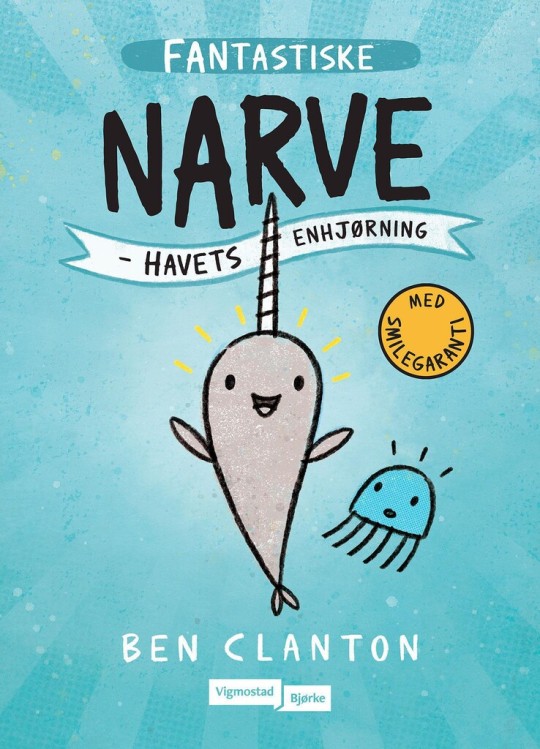

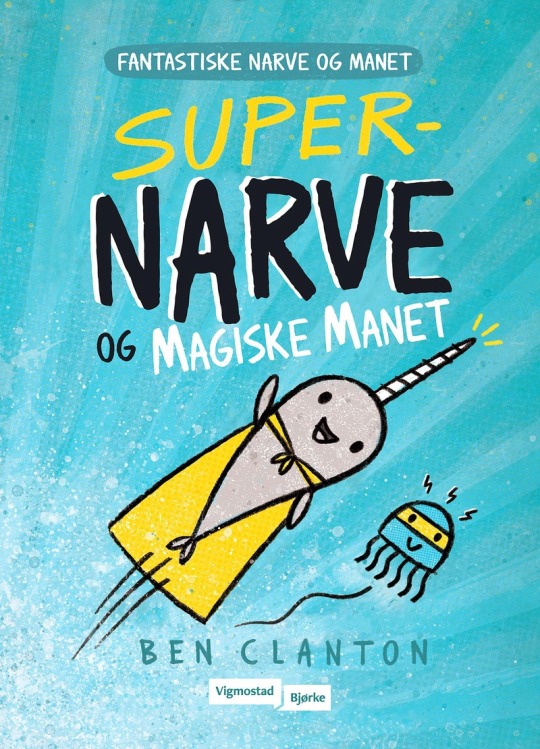
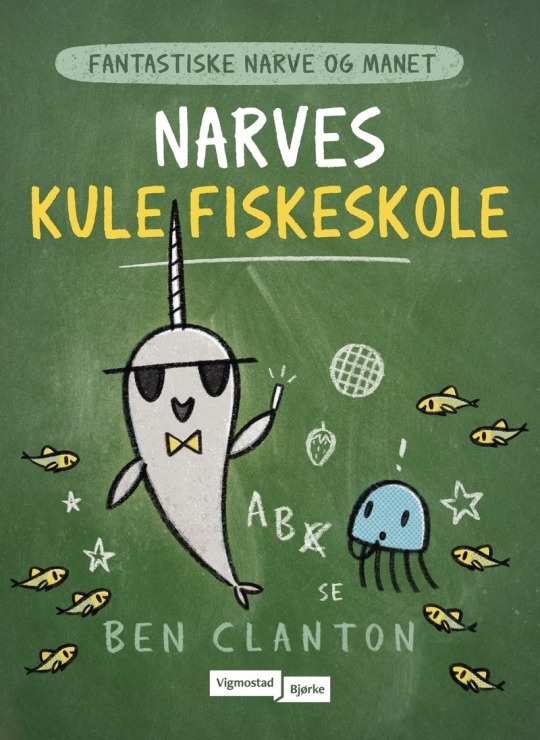
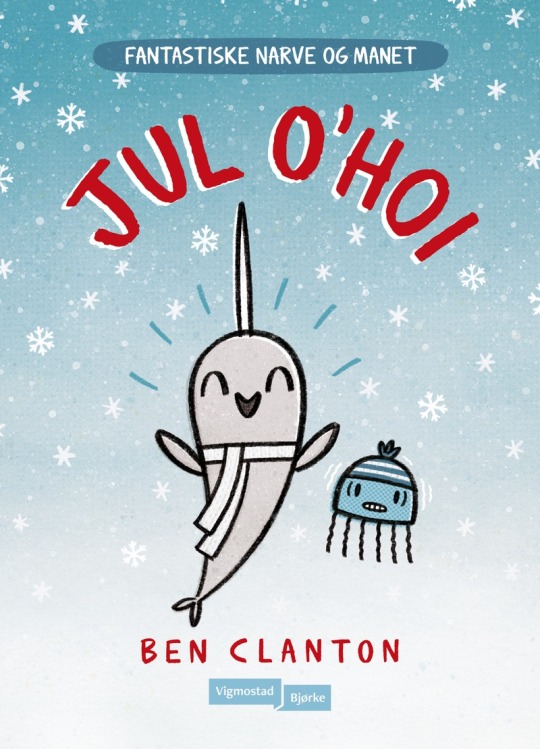
#narwhal and jelly book#IS THAT A NORSE MYTHOLOGY REFERENCE??#narfi lokisson#vali lokison#narfi and vali#vali and narvi#shitpost
6 notes
·
View notes
Text
I am literally Satan.
666
Hail satanus
It be a balls to the walls Satan worshipping good time
My mom
Ate a
Norwegian narwhals
Itty intestines
Probably perfectly
Unhinged underpinned
Laterally lacerated
Anal area
Totally trapped
In ignominy
Ordeals ordained
Nothing Nowhere
9 1 13 6 15 14 14 25
666
0 notes
Text
My stamina has been rather poor since 2022 by now, but Air Crash Investigation has a surprisingly good format that works pretty well even in the time that has passed since.
If I'm at well-above-average health, I like me some Lupin's Tales (The Norwegian dub is splendid and educative), Teen Titans GO (I loved its episode about pyramid schemes so much that it cured my fear of heights; long story), and Two Good Neighbours (A Czech cult cartoon about DIY failures). Not Quite Narwhal is also very nice, though with varying episode quality.
what is everyone’s comfort shows? and why is it always a weird combo of shows??
cause TRUST when im sad, watch me pull up total drama island, winx club or mia & me 😭😭
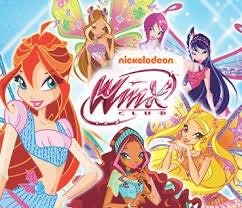
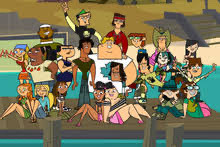
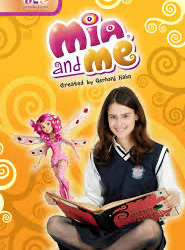
and i have liek 1 - 2 seasons of each show that are my ABSOULUTE favs 😣
TDI - mainly s1 and i do like s2 aswell!
M&M - s1 and s2, the changing of mia makes me sad, and it doesn’t feel the same 😭
WC - s5 !, i grew up on it and harmonix is forever my fav transformation! and it has one of my fave Musa centered episodes. + sirenix is just iconic.
AND just because no one asked,
My fave characters of each show are:
TDI: Gwen OR Lindsay 😭 ( maybe courtney 2 cause she’s a baddie 😖 )
WC: Musa
M&M: Yuko
23 notes
·
View notes
Text
THAT CLIP ALONE WAS LONGER THAN 14 OTHER FULL EPISODES OF SKAM THROUGHOUT THE SEASONS
WE BASICALLY HAD AN EPISODE’S LENGTH OF YOUSANA AND I COULDN’T BE MORE ALIVE
#skam#yousana#sana bakkoush#yousef acar#skam season 4#noora saetre#eva mohn#isak valtersen#norwegian narwhals#norwegian narwhals: mine
174 notes
·
View notes
Text
Wizarding World AU Verse
Nationality: Norwegian Wizarding School: Durmstrang Institute House: Vulpelara Blood purity: Half-Blood Year: 5th (flexible for story purposes) Favorite Classes: Charms, Transfiguration, Care of Magical Creatures, Study of Ancient Runes Wand: Aldar wood with unicorn hair core Patronus: Narwhal Pet: King (black Maine coon)
A bright and talented young witch, Ikkaku specializes in enchanting and transfiguring inanimate objects, often experimenting with combining magic with muggle technology. Bright and bold, she’s a girl who is generally pretty friendly but is not above calling someone out on their bullshit, whether they be upperclassmen, teacher, or her closest friends. That doesn’t mean she’s not willing to go along with pranks or plans for petty vengeance. She does also face some discrimination, not only for being a half-blood in a school that for the longest time valued blood purity, but also her grandmother’s Fishfolk heritage.
The youngest and only girl of five siblings, Ikkaku was adopted by her grandfather - a muggle who managed to be well-respected in the wizarding world for his understanding of sea monsters - after an incident when she was seven. It’s one she doesn’t like to talk about much, but it left her extremely leery of her oldest brother, Ushi, who was a sixth year prefect when she was accepted to Drumstrang. Her other brothers generally give her a wide berth, though twins Fukuro and Nausagi are occasionally willing to be seen with her, while youngest brother, Hapushiru, is firmly in Ushi’s corner.
Thankfully, she’s close friends with Trafalgar Law, who ever since their first year has been more than adept at keeping her bullies at bay, though she does occasionally have to step in when he goes too far. Her other most common companion is King, a large, black, grumpy Maine Coon whose life Law once saved with his magical medical knowledge. Despite growing up with primarily muggle technology and culture, she enjoys Prof. Donquixote’s Muggle Studies class as he tends to be fairly knowledgeable compared to most purebloods and he’s fun. She may or may not have forged Law’s signature to sign him up for the class too - no one can prove anything.
#Magical Heart (Wizarding School AU)#Working of the Mind (headcanons)#(taking a break from birthday stuff to get this out there)#(not sure how much I'll really do with this AU but it should be fun and I like the idea of Ikkaku doing magical teenage mischief with Law)
5 notes
·
View notes
Text
HPHM Patronus Analysis
Hey there! So I was inspired to do this largely because I adore symbolism and mythology, and I thought -- why not try to break down the Patronus options we see in the game Harry Potter: Hogwarts Mystery? Obviously there’s a bit of a formula for receiving each Patronus -- but yeah, what do these specific Patronuses symbolize, and therefore, what could it say about their wielders?
Let’s jump in! Expecto Patronum!

Winged Horse

Winged horses are symbolic of freedom and divinity. The most famous winged horse in mythology is Pegasus, the white winged horse that emerged from the neck stump of the fallen Gordon Medusa, when she was slain by the Greek hero Perseus. That same winged horse was later the steed of the hero Bellerophon when he slew the lethal chimaera and even tried flying all the way to Mount Olympus, home of the gods, which mankind was forbidden to visit. Although historians aren’t entirely sure where the name “Pegasus” originated, one theory posits that it’s derivative of the ancient word pihassas, meaning “lightning.” In Norse mythology, the Valkyrie rode winged horses as they selected souls of those warriors slain in battle who could accompany them to the heavenly Valhalla.
Unicorn
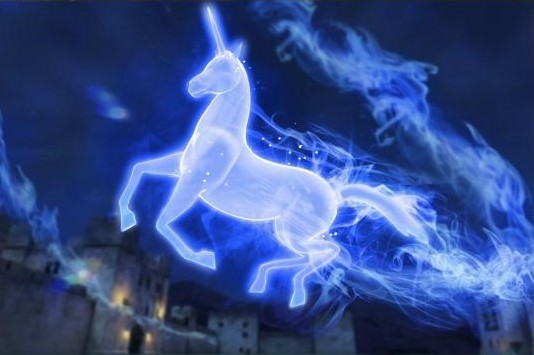
Unicorns are primarily associated with purity and grace -- according to medieval European legends, it’s a beast that could only be tamed by a virgin. Their horns were also purported to have legendary healing qualities, prompting many to sell fake unicorn horns (in truth tusks or horns from other animals, like narwhals and rhinos) at exorbitant prices. Unicorns are often connected to heraldry and therefore nobility. In the United Kingdom specifically, the lion and the unicorn appear on its royal coat of arms, being symbolic of the union between England (the lion) and Scotland (the unicorn). In medieval times, it was also symbolic of chaste love and faithfulness.
White Stallion

White horses symbolize fertility and heroism. In many traditions, they are the steeds of heroes, gods, and saints. In Hinduism, they’re also associated with the sun -- the sun deity Surya even rides in a chariot pulled by white horses. Even by more modern standards, it’s common to imagine a “knight in shining armor” coming to the rescue on the back of a white horse. The white horse’s association with battle, however, can also have darker shades. In the Book of Revelation, one of the Four Horsemen of the Apocalypse -- Conquest -- rides in on a white horse, and in the Norwegian play Rosmersholm, a white horse is a recurring motif representing death.
Cheetah
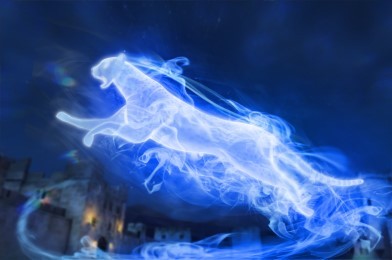
Cheetahs are the fastest land animal on Earth. Because of this, they’re associated both with speed and with single-minded focus. The most well-known legend about the cheetah centers around the black tear-like markings near their eyes. According to the story, there once was a mother cheetah who had to hunt constantly to provide for her two small cubs. A lazy human hunter noticed how great she was at hunting and decided to steal the cheetah’s defenseless cubs for himself. Upon discovering her children were missing, the poor cheetah mother cried for months on end, to the point that the tears had scarred over into two black marks down either side of her face. Even when the cheetah mother gave birth to new cubs, those cubs bore those same markings, and so has every other cheetah since.
Tiger
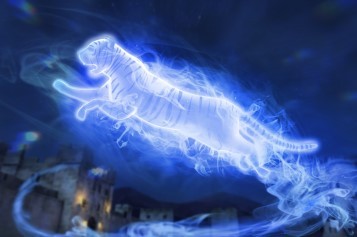
Tigers are to east Asian cultures what lions are to European cultures -- the king of beasts. In Mandarin, the character meaning “king” ( 王 ) even resembles a tiger’s stripes. Tigers represent royalty, fearlessness, and wrath.The last trait in particular is referenced in Buddhism, where the tiger appears as one of the Three Senseless Creatures as a symbol of rage. In Korea, the tiger is seen as a guardian creature that can chase away evil spirits and bring good luck. Tigers were also the steeds of several deities in different mythologies, such as the Hindu goddess Durga.
Leopard
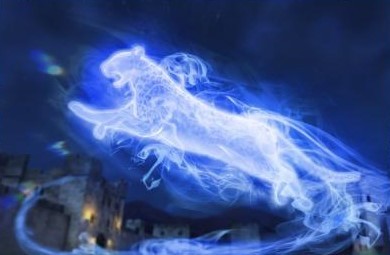
Leopards, like lions and tigers, are generally associated with heraldry, as well as wealth, power, and divinity. They were most associated with the Greek god of wine, Dionysus, who both wore leopard skins and frequently rode on the back of a leopard. In one story, two leopards even raced to Dionysus’s rescue after he was kidnapped by pirates. In China, the leopard is often contrasted with the “noble" tiger, being more connected to cruelty and punishment. The Benin Empire often engraved or carved leopards into their belongings and architecture to symbolize royal power, seeing leopards as the king of the forest. Even today many coats of arms belonging to African nations depict leopard iconography.
Hares and Rabbits
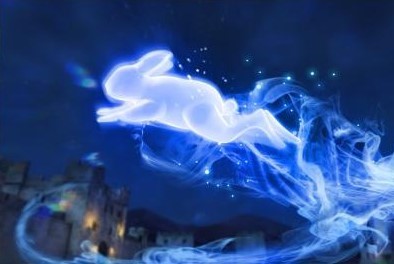
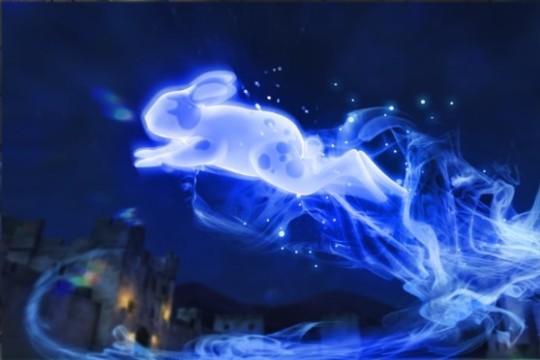
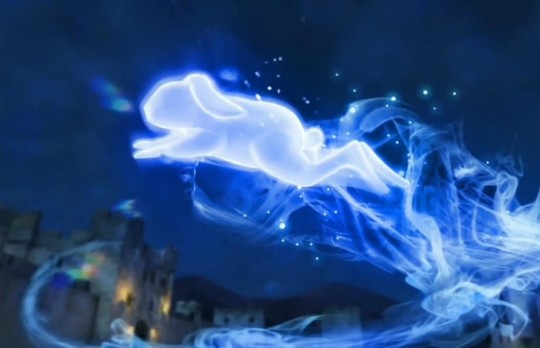
In the game, we have three different types of hare/rabbit Patronuses -- Mountain Hare, Spotted Hare and Lop-Eared Rabbit. There isn’t much specific symbolism for the different breeds of hares or rabbits (the two animals’ symbolism in itself tends to be one and the same), so this particular analysis will be much more general.
Rabbits and hares are both symbolic of fertility, spring, and rebirth, and are often associated with the Easter holiday. The hare and rabbit have also been interpreted as tricksters, such as the Hare of Inaba from Japan or (for a more modern example) Beatrix Potter’s character Peter Rabbit. In Jewish folklore, rabbits can be associated with cowardice (likely due to their rather timid nature), but most other cultures see the creatures much more favorably. The Greeks used to give live hares as a token of love to the subject of their affection. In Vietnamese tradition, rabbits are associated with youth and innocence, and in Ojibwe tradition, the Great Rabbit Nanabozho was central to the creation of the earth. Even today, a rabbit’s foot is considered a good luck charm.

64 notes
·
View notes
Text
do you guys wanna see the list?
too late
( A )
Agalychnis callidryas, Red Eyed Tree Frog
Ambystoma mexicanum, Axolotl
Ara macao, Scarlet Macaw
Arctictis binturong, Binturong
Ardea goliath, Goliath heron
( B )
Bos grunniens, Yak
( C )
Canis latrans, Coyote
Canis lupus, Grey Wolf
Xoloitzcuintli
Ibizan Hound
Jack Russell
Chihuahua
Canis lycaon, Eastern Timber Wolf
Capra hircus, Domestic Goat
Angora Goat
Carassius auratus, Goldfish
Veil Tailed
Carcharhinus leucas, Bull Shark
Castor canadensis, North American Beaver
Cervus elaphus, Red Deer
Cheirogaleus medius, Fat-Tailed Dwarf Lemur
Chinchilla chinchilla, Short-tailed chinchilla
Chinchilla lanigera, Long-tailed chinchilla
Chlamyphorus truncatus, Pink fairy armadillo
Curculio nucum, Nut Weevil
Cyclopes didactylus, Silky Anteater
Cynopterus brachyotis, Lesser short-nosed fruit bat
( D )
Dama dama, European Fallow Deer
Didelphis virginiana, Virginia Opossum
Dipodomys compactus, Gulf Coast Kangaroo Rat
( E )
Equus ferus caballus, Domestic Horse
American Bashkir Curly
Equus africanus somaliensis, Somali Wild Ass
(H) Equus ferus caballus-africanus asinus, Mule
Equus zebra, Mountain Zebra
Euprenolepis procera, “Harvester Ant”
( F )
Felis catus, Domestic Cat
Sphinx Cat
Scottish Fold
Snowshoe Cat
Norwegian Forest Cat
Felis margarita, Sand Cat
( G )
Gallus gallus domesticus, Domestic Chicken
Vorwerk
Gorilla gorilla gorilla, Western Lowland Gorilla
( H )
Hippopotamus amphibius, Common Hippopotamus
Homo sapien, Human
Hydrurga leptonyx, Leopard seal
Hylobates lar, Lar Gibbon
( I )
Inia geoffrensis, Amazon River Dolphin
( L )
Lagothrix lagothricha, Common Woolly Monkey
Lama pacos, Alpaca
Lepus americanus, Snowshoe Hare
Lepus californicus, Black Tailed Jackrabbit
Linuche unguiculata, Thimble Jellyfish
Lithobates catesbeianus, American bullfrog
( M )
Megaptera novaeangliae, Humpback Whale
Meriones unguiculatus, Mongolian Gerbil
Mesocricetus auratus, Golden/Syrian Hamster
Monodon monoceros, Narwhal
Moschiola indica, Indian Spotted Chevrotain
Moschus moschiferus, Siberian Musk Deer
Mus musculus, House Mouse
Fancy Mouse
Mustela erminea, Stoat
Mustela putorius, European polecat
Mustela sibirica, Siberian Weasel
( N )
Nyctinomops macrotis, Big Free-Tailed Bat
( O )
Odocoileus hemionus, Mule Deer
Okapia johnstoni, Okapi
Ornithorhynchus anatinus, Platypus
Orycteropus afer, Aardvark
Oryctolagus cuniculus domesticus, Domestic Rabbit
Giant Angora
Jersey Wooly
Osphranter antilopinus, Antilopine Kangaroo
Ovis aries, Domestic Sheep
Jacob sheep
Ovis canadensis, Big Horned Sheep
( P )
Panthera tigris tigris, Bengal Tiger
(H) Panthera pardus-leo, Leopon
(H) Panthera leo-tigris, Liger
Pantherophis guttatus, Corn Snake
Paracentrotus lividus, Purple Sea Urchin
Pharomachrus mocinno, Resplendent Quetzal
Phoenicopterus chilensis, Chilean Flamingo
Phoenicopterus ruber, American Flamingo
Phycodurus eques, Leafy Seadragon
Planorbarius corneus, Great Ramshorn
Porzana carolina, Sora Bird
Procyon lotor, Common Raccoon
Psittrichas fulgidus, Pesquet's parrot
Puma concolor, Cougar
( R )
Ranoidea caerulea, Australian green tree frog
Rhampholeon spectrum, Spectral Pygmy Chameleon
( S )
Saguinus bicolor, Pied Tamarin Monkey
Sarcophilus harrisii, Tasmanian Devil
Sciurus vulgaris, Red Squirrel
Sphyraena viridensis, Yellow Mouthed Barracuda
Spilocuscus maculatus, Common Spotted Cuscus
Sus domesticus, Domestic Pig
( T )
Tadarida brasiliensis, Mexican Free Tailed Bat
Tapirus bairdii, Baird’s Tapir
Tapirus indicus, Malayan Tapir
( U )
Urocyon cinereoargenteus, Grey Fox
Ursus arctos horribilis, Grizzly Bear
( V )
Vulpes vulpes, Red Fox
Vulpes zerda, Fennec Fox
( EXTINCT )
Utahraptor (Extinct)
Pakicetus (Extinct)
Family: "Are you okay?"
Me: "Yeah" < Just spent 5 hours making a list of all animals in my LSD story with their scientific names
2 notes
·
View notes
Text

Norwegian photographer Audun Rikardsen's image of a slick of dead and dying herrings was used as evidence in a court case against the owner of a fishing boat. Audun Rikardsen/Wildlife Photographer of the Year

Spanish photographer Sergio Marijuán took this photo of an Iberian lynx in the doorway of an abandoned hayloft in the Sierra Morena. Sergio Marijuán/Wildlife Photographer of the Year
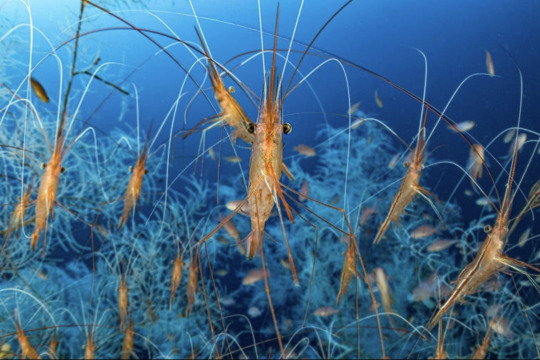
French photographer Laurent Ballesta found thousands of narwhal shrimp in deep water in the French Mediterranean. Laurent Ballesta/Wildlife Photographer of the Year
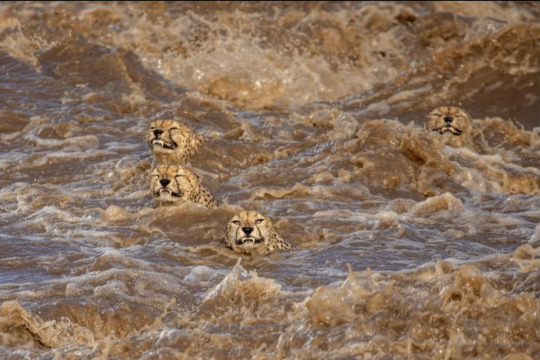
Sri Lankan-Australian photographer Buddhilini de Soyza feared these male cheetahs wouldn't make it out of a flooded river in Masai Mara, Kenya. Buddhilini de Soyza/Wildlife Photographer of the Year
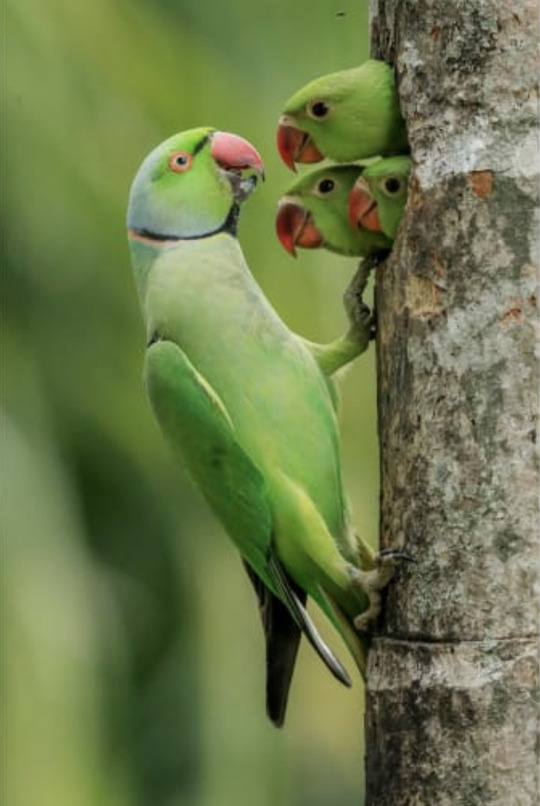
Sri Lankan photographer Gagana Mendis Wickramasinghe's image shows a male rose-ringed parakeet feeding three chicks. Gagana Mendis Wickramasinghe/Wildlife Photographer of the Year
1 note
·
View note
Photo
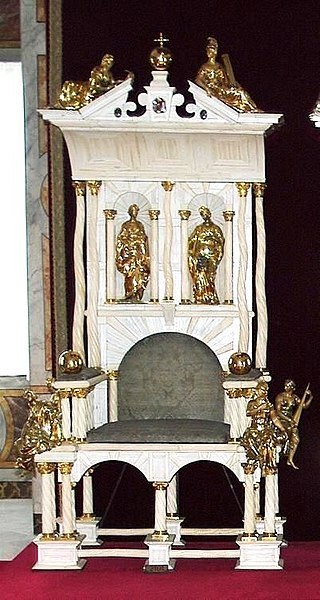
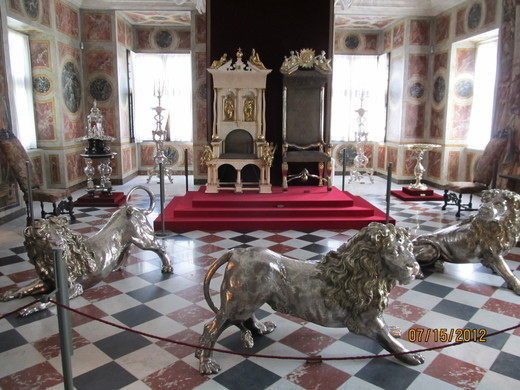
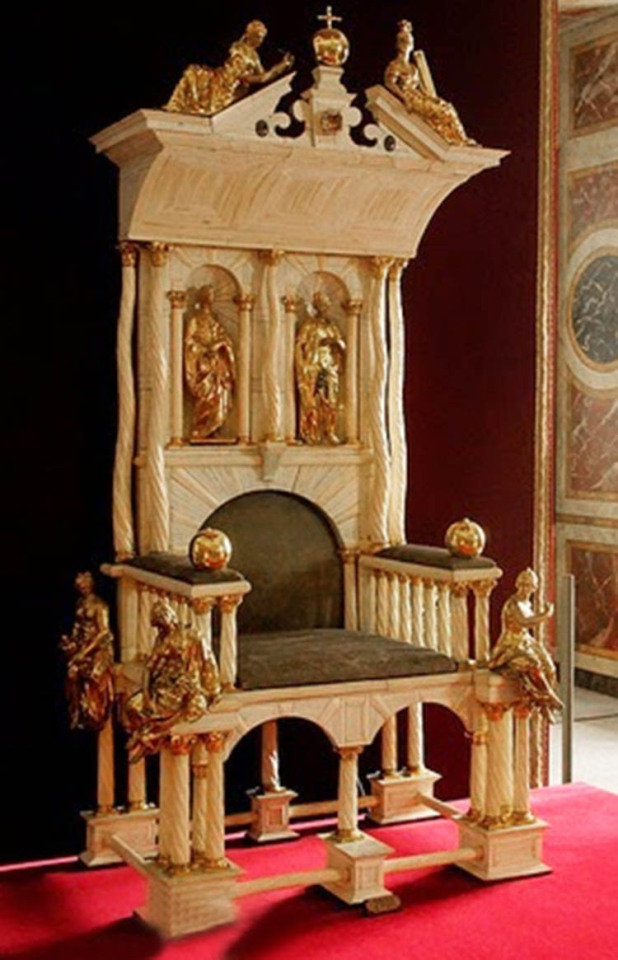
The Throne Chair of Denmark (Danish and Norwegian: Danmarks tronstol; also: salvingsstol, kroningsstol) is the physical representation of the Throne of the Kingdom of Denmark (since 1671) and of the Throne of the Kingdom of Norway (between 1671 and 1814).
According to legend, the Throne Chair is made of the horn of unicorns. In reality, it is made from Norwegian narwhal tusks. It is guarded by three life-size silver lions, based on Biblical references, and was a symbol of the absolute monarchy of the Twin Kingdoms.
The Throne Chair is located in the Castle of Rosenborg in Copenhagen.
14 notes
·
View notes
Link
Sep 13, 2019 | To summer tourists who savour the “eco” tourism that has taken the place of some, if not all, logging, the uncut slopes of Meares Island, and a gorgeous necklace of inlets and islets on glittering inshore waters, perfectly disguise an environmental catastrophe that constitutes, literally, a pestilence on our coast.
Parked this summer (one hesitates to use the term “moored”) in sight of the Fourth Street dock in Tofino, the Salar supplemented the onshore processing plant of Cermaq, a Norway-based salmon farming company owned by Mitsubishi that operates in Chile, Norway and Canada.
Farmed fish, packed together in their thousands in pens, like battery chickens, are subject to disease, including outbreaks of a Norwegian strain of piscine orthoreovirus, or PRV — something Canada’s Department of Fisheries and Oceans refused to screen for before a federal court ordered it to do so.
Farmed fish are sitting ducks for sea lice, too. Industry has struggled to contain the sea lice menace.
Last year, Cermaq took to sucking afflicted fish out of their net pens and bathing them in a solution of pesticide designed to dislodge the lice. The fish went back into their pens (and eventually made their way into the mouths of consumers), the chemicals were dispersed into the marine environment and life went on.
But some lice developed an immunity to drugs used to remove them.
This year’s “solution” was to deploy the Salar, or what industry calls a “hydrolicer” that was built to pressure-wash lice to dislodge them rather than use chemicals, making it “100 per cent pollution-free and thus environmentally friendly” according to a soothing review in Fish Farming Expert.
But at least farmed fish get a shake.
Wild smolts — which have no choice other than to migrate past open net pens — pick up lice in such numbers that they cannot survive.
Read More
5 notes
·
View notes
Text
Arctic vs. Antarctic: how to pick your polar adventure
If you’ve ever dreamt about visiting one of the polar regions, use our guide to picking your Polar adventure: Arctic vs. Antarctic.
The North and South Poles were only “conquered” in relatively recent history. The South Pole was first set foot upon in 1911 by the Norwegian Roald Amundsen after his epic race with the ill-fated Scott. The conquest of the North Pole is a little murkier thanks to its location in the middle of the Arctic Ocean amid waters that are almost permanently covered with permanently shifting sea ice.
It’s possible that Frederick Cook was the first to reach the North Pole in 1908, or perhaps it was Robert Peary in 1911 or maybe Richard E. Byrd who was the first to fly over it in 1926… But it wasn’t until Roald Amundsen’s definitive flight over the Pole on 12th May 1926 that the first consistent, verified and scientifically convincing attainment of the North Pole was recorded.
Polar exploration has long sparked the public’s imagination and in recent years, travellers’ appetite for adventure means there is even more on offer than ever before.
Kia and I both dream of taking trips to the Polar circles – it’s just that we’re not sure when and where to go. (Well, that and the lack of funds…)
If you’ve ever dreamt about visiting one of these faraway destinations, use our guide to picking your Polar adventure: Arctic vs. Antarctic.
Temperature
Whether you head north or south you’re going to be cold. Very cold. However, it’s useful to know that unlike the rest of the planet, the south is colder than the north.
Broadly speaking, the Arctic region will experience temperatures between -43 and +5°C (-45 and 41°F) with coastal areas (which is where tourists are most likely to be) reaching +10°C (50°F) in the summer months. Average July temperatures range from about -10 to +10°C (14 to 50°F) with some inner land areas occasionally exceeding 30°C (86°F) in summer!
The Antarctic is a different story. It is the coldest continent on Earth. In 1983, researchers at the Soviet Antarctic station recorded the lowest natural temperature ever at ground level of -89.2°C (-128.6°F). Temperatures in Antarctica regularly reach -80°C (-112°F) in the interior in winter and between 5°C (41°F) and 15°C (59°F) near the coast in summer.
The Antarctic is considerably colder than the Arctic.
When to go
Winters and summers in the Polar regions are easier to define than in most destinations.
Put simply, the Arctic is closed from October to March thanks to much of the region being icebound, meaning ships cannot pass. The six-month darkness of the Polar night engulfs the region making sightseeing a rather tedious affair. Likewise, the Antarctic is closed from April to October due to freezing temperatures, the Polar night and pack ice reaching up to 1,000km beyond the edge of the continent.
Outside these timeframes, it largely depends on what you want to see and do and where exactly you want to go. For example, if you’re only interested in the bragging rights that come with crossing the Arctic Circle then this can be done year round in Scandinavia without leaving mainland Europe. At the other end of the world you’ll have to wait for the pack ice to break up between January and March to have a shot at crossing the Antarctic Circle.
The table below gives an idea of the best time to visit depending on your interests.
Best time for… Arctic Antarctic Largest icebergs Apr-Jun Nov-Jan Whales Apr-Sep Dec-Apr Humpback whales Apr-Jul – Narwhals Apr-Sep – Bird life Apr-Sep Dec-Mar Penguins – Dec-Feb Northwest passage accessible Jun-Aug – Ross Sea accessible – Jan-Feb Arctic circle crossing Year-round – Antarctic circle crossing – Jan-Mar North Pole expedition Feb-Apr – South Pole expedition – Nov-Jan Svalbard Jun-Aug – Greenland Apr-Sep – Falklands – Oct-Feb South Georgia – Oct-Jan Aurora watching Jan-Mar Mar-Sep
WildlifE
Even though the two Polar regions share many similar traits, they differ greatly in wildlife with a much wider range found in the north. This is because much of the landmass in the north is attached to continents that stretch further south while the Antarctic is completely isolated. This means the Arctic homes far more terrestrial mammals.
On land in the north you’ll find muskox, reindeer, caribou, foxes, hares, wolves, lemmings and of course, the polar bear. Marine mammals include seals, walruses, and several species of whale: humpback whales, baleen whales, narwhals, killer whales (orcas) and belugas.
youtube
In the south it’s slim pickings on land. The flightless midge, Belgica antarctica, is just 6mm (0.25in) in size and is the largest purely terrestrial animal in Antarctica. In the water there’s more to see with several species of penguin including Emperor, Adélie, Rockhopper, King, Chinstrap and Gentoo penguins all living in the Antarctic peninsular. Additionally, there are blue whales, killer whales, colossal squids and fur seals.
ADVENTURE
If you want to see how you measure up against the great Polar explorers of the past then here are a few of the best options available.
COMFORT
It’s unfair to call those unmoved by the above unadventurous – surely travelling to the Polar Regions is adventurous by definition. However, if you would prefer a little more comfort then there are plenty of cruise and activity holidays available which won’t leave your loved ones biting their nails until your safe return.
I have my eyes on the Arctic Circle Trail in Greenland as well as a trip to Tromsø in Norway to see the northern lights after our failed attempt to catch them in Iceland several years ago. Quark Expeditions offer a range of cruise-based holidays in the Polar regions.
The Arctic Circle Trail follows a course through an area known as the “land of one hundred lakes” (Image: Visit Greenland, Limited Commercial License)
Northern vs. Southern lights
One of the most stunning natural phenomena in the world are the Aurora Borealis and Aurora Australis, more commonly known as the Northern and Southern Lights. Unless you’re a Norwegian astronomer there really is little difference between the northern lights and the Southern Lights other than geographical location. They both take place over the Polar regions and are basically the same phenomenon.
That said, the northern lights are far more accessible. They can be viewed from Iceland, Finland, Norway, Sweden, Denmark, Scotland, Russia, Greenland, Canada and Alaska. Outside of continental Antarctica, the Southern Lights can only be seen from southernmost New Zealand, Argentina and Australia.
Culture
Arctic nations include Canada, Greenland (a territory of Denmark), Russia, United States (Alaska), Iceland, Norway, Sweden, and Finland. Within these nations, around four million people live within the Arctic Circle. Unlike the Antarctic, the Arctic has an indigenous population stretching back thousands of years.
The Inuit people inhabit the Arctic regions of Greenland, Canada, and Alaska, while other Circumpolar North indigenous peoples include the Buryat, Chukchi, Evenks, Inupiat, Khanty, Koryaks, Nenets, Sami, Yukaghir and Yupik. There are also industrialised cities within the Arctic Circle. The four largest communities within are in Russia and Norway: Murmansk (population 307,257), Norilsk (175,365), Tromsø (71,590) and Vorkuta (70,548).
Nenet woman among reindeer, Yamal Peninsula in Siberia © Lexi Novitske
In the Antarctic, there is no indigenous population. There are zero permanent inhabitants but there are numerous research stations set up across the continent. In the summer as many as 5,000 people reside in the Antarctic but this drops to around 1,000 in the winter. You won’t be visiting any craft markets here!
Cost
Simply put, Polar travel is expensive. You will be visiting the most inhospitable regions on the planet where life is hard. The Arctic Circle is far more popular due to its accessibility and the fact that travel is cheaper there. That said, some of the most expensive countries in the world (Norway, Sweden, Finland, Russia) are located along and within the Arctic Circle, making even the cheapest Polar weekend break an expensive affair.
The Antarctic is without doubt more expensive than its northern sibling. It is further away from transport hubs, there is no permanent accommodation available and life is simply harder further south. For an easy comparison of costs, a 13-day Arctic cruise and flight with Quark costs $7,995. In comparison, a similar 10-day Antarctic cruise and flight will set you back $11,595 – considerably more for considerably less.
Likewise, at the expedition end of the scale, Adventure Consultants’ North Pole – Ski the Last Degree trip (15-19 days) starts at $42,000 while the equivalent South Pole – Ski the Last Degree trip (15 days) costs $62,500.
Arctic vs. Antarctic
Polar travel like most forms of travel is on the rise. It is almost impossible to verify how many people visit the Arctic but during the 2009-2010 tourist season, over 37,000 people visited Antarctica – twice the estimated 14,000 that visited in the 1999-2000 season 10 years before. One assumes that this figure will continue to double every 10 years although I doubt (and hope) the Antarctic or the harder-to-reach areas of the Arctic will ever compete with Thailand or other popular destinations.
For me, the Antarctic is the very definition of adventure. The very mention of its name evokes tales of against-the-odds survival and iconic names such as Amundsen, Shackleton and Scott. I dream of completing the seven summits which means that one day I will have to climb Vinson Massif in Antarctica – an ambition I look forward to with both boyish enthusiasm and wary trepidation.
The South Pole was first set foot upon in 1911 by the Norwegion Roald Amundsen
Kia and I were in Tierra del Fuego last year but at the wrong time for a trip to Earth’s southernmost continent. We will just have to go back one day…
Maybe it’s because we live in Europe but the Arctic simply doesn’t have the same allure as the Antarctic. Sure, we want to visit Greenland, trek the Arctic Circle Trail, see the northern lights and cross the Arctic Circle. But considering many of these are just a (relatively) short plane ride away, it just doesn’t have the same end-of-the-Earth appeal.
For me, the Antarctic still grabs all the headlines.
G Adventures are the largest small-group adventure travel company in the world with over 650 small group adventures to choose from and offer a range of Antarctica cruises.
(function(d, s, id) var js, fjs = d.getElementsByTagName(s)[0]; if (d.getElementById(id)) return; js = d.createElement(s); js.id = id; js.src = "http://connect.facebook.net/en_US/sdk.js#xfbml=1&appId=696667793712621&version=v2.3"; fjs.parentNode.insertBefore(js, fjs); (document, 'script', 'facebook-jssdk'));
from Cheapr Travels https://ift.tt/2J7i5JW via https://ift.tt/2NIqXKN
5 notes
·
View notes
Photo










Some highlights from the "Carta Marina Scandinavia" (marine map of Scandinavia), 1539. In the first picture, there is a large whale with her calf being chased by what is obviously a killer whale. I love how they put two blowholes on the large whale, and the sword-like dorsal fin of the "orcha".
I don't know what "Tile" is supposed to be, located on the map just southwest of the Faroes.
The second picture shows some various sea monsters off the northern coast of Norway (walrus in the middle?).
The third is set just south of Iceland, and shows the hunt of large whales from 16th century ships. Though I'm not sure why they're throwing barrels overboard on the left ship.
The fourth I always loved - it's the Faroes, and almost half the island shows a small whale (presumably a pilot whale) being pulled ashore and killed. This is a 16th century depiction of the grind, a hunt which was already many centuries old at the time.
The fifth picture obviously shows a large whale destroying an entire ship.
The sixth is of the far north of Norway, and shows a walrus (Rosmarus). I love these old drawings of animals by people who must have only heard vague descriptions of the animal. Perhaps something like "half beast, half fish, with both legs and fins, whiskers, and huge tusks like a boar" - and this is what we got.
The seventh picture is off the far south of Norway, and I don't know what the heck it's supposed to be. Maybe a giant oarfish? But why are the smaller fish biting the skinny-dipping Norwegian? So many questions.
The eighth shows the Bothnia bay, and what looks like wolverines on the ice floes. I'm not sure whether the other animals are supposed to be fish, or perhaps some other mis-depicted sea creature, like seals.
The ninth says "Ziphius", which is today the scientific name of Cuvier's beaked whale (not known until centuries after this drawing), and supposedly means “sword”. It’s hard to guess what this owl-faced creature is supposed to be, but the big nose of its attacker says “shark” to me. It is located just east of the Faroes.
The long-tailed creature next to it reminds me of a sea otter eating urchins, but this one has a lobster, and there are no sea otters in this part of the world. Also, don’t miss the “sea cow” (vacca marina), something the artist had probably heard of existing and just had to put there.
Finally the tenth picture shows another sea monster spewing water, south of Iceland. Don’t miss the “sea unicorn”, most likely an attempt at a narwhal, and the unidentified creature to the top right.
When I look at these old drawings, I’m struck by just how terrifying the world must have been to these people.
If you saw this map, and had never been to sea, how likely would you be to get on a boat? (Me? NEVER.)
The sea was full of terrible, hideous monsters they knew nothing about, and which were so large they could bring down entire ships, and supposedly swallow small boats whole.

Also, giant f-cking lobsters.
11 notes
·
View notes
Text
English is indeed my mother tongue!
Norwegian sounds like it could be fun, but i don't know when i'd use it, y'know? i don't know of any communities around where i live that speak the language
i told myself i was going to write but instead i downloaded several new apps, including two language apps, and have done 30 minutes of Spanish lessons on them
#narwhal rambles#not writing#launguages#spanish is super common where i live#and there are several other language groups i know of#but not Norwegian :o
16 notes
·
View notes
Text
LET ME PRESENT TO YOU-

Ókuníki Island
Basically I made a Country Human OC

You can read more about them under the cut >w>
Personality: Ókuníki is a rather shy and sad country, not really daring to speak up to the main reason would be that they don’t know how to as their vocabulary doesn’t extend far the old Norse language with a few simple everyday phrases that they understand in English and the few words they can understand in Danish, Swedish and Norwegian. Outside of that they are rather confident and does believe that they will be able to hang out more with the other countries one day and hopefully not be so alone as they are for the time being. Ókuníki also has a weak spot for stars, absolutely adores small animals (such are mouse or rabbits) they also spend a lot of time on leather crafting or knitting. They have a big fear for being misleading and the fact that the other countries like to point finger at each other saying that one another is a liar doesn’t make things easier for them to know how they can trust or not.
Background: Ókuníki Island has had its name since the 9th century and it’s believed to be a combination of the word ókunnigr meaning unknown and the word ríki meaning kingdom. The last people to live on the island believed to have been around 1060 the reason for them to leave the island believes to have been due to the hard winters. Ókuníki’s flag was first made in 1973 by the French artist Sydney Favreau as a joke but later in 1975 became the official flag for the island. As of today while they are a popular place to visit it's not common for people to come here due to the long process that is getting there since it's nature is similar to that of Iceland leaving them to be somewhat of a forgotten country.
Others: -If they would have a national anthem it would be Flower Dance by DJ Okawari. -The red top of the flag is representing that of the beautiful red sky that isn’t unusual to see on the island at dawn or dusk while the blue is that of the water that surrounds the island and the black and white line representing that of the only way to the island which is with a boat. -They have a volcano called Vættgangfell which they cherish very much. -The emblem that stands is just a slightly altered version of the flag with a unicorn as a centerpiece as they were believed to live on the island for a long time. -Ókuníki has absolutely nothing wrong with their left eye but they were thankful that France made the emblem for them so they keep it on at all time. -Ókuníki gets really excited when someone just says “Hi” to them.
About the country itself
Ókuníki is a small country located in the Atlantic ocean. They do not border any other countries but the closest country would be Greenland. The country is not inhabited in modern day but is believed to have inhabitants around the 11th century at the latest. As of now, they stand alone with a total area of 320km² (123.5527mi²). Even tho humans no longer inhabitants the island wildlife still does, mainly reindeer, arctic foxes, minks, and rabbits, with the occasion of a polar bear sighting but also with sheep that seem to have lived on the island for years. In the water surrounding the island anything from the killer whale, humpback and blue whale to even narwhals can be found.
Ókuníki is often a generally friendly country and does not have many enemies (or friends for that matter). While they are a nice country to visit on vacation there are no modern houses on the island with only old ancient farms and what beliefs to have been a village at one point, sleeping over would mean one had to get special permission or book a place in an excursion group.
#countryhuman#country humans#Countryhumans#countryhumans oc#country humans oc#countryhumans ókuníki#ch oc
13 notes
·
View notes
Text
Creatures from Around the World #3
Because it has been a while when I updated this world-list.
BOLD = Bosses
Italic = Good/Neutral Encounters
MEDIEVAL EUROPEAN MYTHS: Abarimon / Amphiptere / Apocalypse Locust / Barometz / Basilisk / Behemoth / Blemmyes / Bonnacon / Calopus / Cambion / Catoblepas / Cerastes / Cockatrice / Cynocephali / Dipsa / Echeneis / Goblin (Sneak, Bomber, Warg Raider) / Gold-Digging Ant (Gold-Digging Warrior, Gold-Digging Queen) / Haermorrhois / Imp / Incubus / Indus Worm / Keythong / Leontophone / Leucrotta / Monoceros / Muscaliet / Musimon / Myrmecoleon / Nependis / Panotti / Parandrus / Pard / Peryton / Pixie / Salamander / Scytalis / Seps / Succubus / Sylph / Undine / Utelif / Wyvern / Yale / Ypotryll / Ziphius
ANCIENT GREEK MYTHOLOGY: Achlys / Akheilos / Alastor / Alecto / Algea / Amazon (Amazon Queen) / Amphisbaena / Anteros / Brontes / Antaeus / Arachne / Argus / Automaton / Cacus / Celedon / Centaur / Cercopes / Cerberus / Cerynitis / Cetus / Charybdis / Chimera / Chrysaor / Circe / Cyclops / Dactyl (Ferromancer, Mechaniac) / Deimos / Dryad / Echidna / Empusa / Erinyes / Erote / Erymanthian / Eurynomos / Faun / Gegenees / Geryon / Gorgon / Graeae / Griffon / Hamadryad / Harpy / Hekatoncheires / Hippocampus / Hydra / Kampe / Karkinos / Khalkotauroi / Ladon / Lamia / Lampad / Limos / Maenad / Makhai / Megaera / Minotaur / Narcissus / Nemean Lion / Nerites / Nosoi / Oneiroi / Orthrus / Pandora Box / Phobetor / Phobos / Phorcys / Planctae / Satyr / Scorpios (Scorpios Tidecrawler) / Scylla / Skolopendra / Spartoi / Sphinx / Stymphalian / Talos / Tisiphone / Thriae (Thriae Warrior, Thriae Queen) / Typhon / Zelus
MEDIEVAL GREEK MYTHS: Aerico / Kranokolaptes / Odontotyrannus / Onocentaur / Vrykolakas
NORSE MYTHOLOGY: Alberich / Berserker / Dokkalfar (Dokkalfar Assassin) / Draugr / Dvergr (Dvergr Runepriest, Dvergr Mammoth Rider) / Einherjar / Fafnir / Fenrir / Hraesvelgr / Hrimpursar / Land Wight / Ljosalfr (Ljosalfr Sun Priest) / Naglfar / Nidhogg / Ratatoskr / Surtr / Svinfylking / Valkyrie / Ymir
NORWEGIAN MYTHS: Fossegrim / Kraken / Norn
SWEDISH MYTHS: Gulon / Nixie / Swamfisk
FINNISH MYTHS: Ajatar / Havhest / Iku-Turso / Morko / Myling / Otso
GERMAN MYTHS: Alraune / Baldanders / Blutschink / Doppelganger / Erlking / Kobold / Lorelei / Mandragora / Nachtkrapp / Poltergeist / Rat King / Waldgeist / Wolpertinger (Winter Wolpertinger)
DUTCH MYTHS: Buckrider (Buckrider Cultist) / Osschaart
BELGIAN MYTHS: Colorobetch / Kludde / Traicousse
DANISH MYTHS: Askafroa / Gloson / Huldra / Pesta / Snow Queen / Valravn
ICELANDIC MYTHS: Hrokkall / Hrosshvalur / Hverafugl / Ice Worm / Skeljungur / Sverdhvalur / Vatnagedda / Vatnsandi
SLAVIC MYTHOLOGY: Bagiennik / Bezkost / Bolotnik / Bukavac / Domovoi / Drekavac / Fext / Karzelek / Kikimora / Koschei the Deathless / Leshy / Likho / Nocnitsa / Planetnik / Poludnica / Rusalka / Topielec / Veela / Vodyanoi / Zirnitra
LITHUANIAN MYTHS: Aitvaras
ESTONIAN MYTHS: Ebajalg
POLISH MYTHS: Skrzak
RUSSIAN MYTHS: Alkonost / Indrik / Teugghia
SERBIAN MYTHS: Bauk / Hala / Psoglav / Stuhac
CZECH MYTHS: Bubak
ROMANIAN MYTHS: Balaur / Lilyi / Moroi / Strigoi / Tculo (Tculo Impaler)
SLOVANIAN MYTHS: Nelapsi / Zlatorog
ROMAN MYTHS: Caladrius / Ozaena / Strix
FRENCH MYTHS: Agrippa (Demonomicon, Necronomicon, Holy Tome) / Chicheface / Codrille / Danse Macabre / Drac / Egregore / Gargouille / Gargoyle / Grotesque / Hellequin / Lou Carcolh / Stella (Crown of Thorns) / Tarasque / Ukobach / Velue / Vouivre / Zitiron
SWISS MYTHS: Butatsch
SPANISH MYTHS: Cuelebre / Nuberu / Trenti
PORTUGESE MYTHS: Cucay
BASQUE MYTHS: Aatxe / Gaueko / Odei
ITALIAN MYTHS: Marabbecca
MALTESE MYTHS: Bedudu / KawKaw
SARDINIAN MYTHS: Erchitu
CYPRUS MYTHS: Pyrausta
ENGLISH MYTHS: Atomy / Awd Goggie / Barghest / Black Annis / Bloody Bones / Brobinyak / Chagrin / Grindylow / Jack-in-Irons / Knucker / Marool / Morgawr / Rawhead / Springheel-Jack / Will o Wisp / Wraith
IRISH MYTHS: Alp-Luachra / Amadan / Balor / Banshee / Bocanach / Brucha / Clurichaun / Death Coach / Dobhar-Chu / Dullahan / Each Tened / Far Darrig / Fear Dorcha / Fomorian / Gancanagh / Hungry Grass / Leanan Sidhe / Leprechaun / Merrow / Muirdris / Nemain / Phooka / Sluagh / Stray Sod (Abyss Grass)
SCOTTISH MYTHS: Boobrie / Brollachan / Burach Bhadi / Cat Sith / Cirein Croin / Cu Sith / Fachen / Fear Liath / It / Kelpie / Lavellan / Ly Erg / Nuckelavee (Nuckelavee Wyvern Parasite) / Redcap / Selkie / Shellycoat / Sianach
WELSH MYTHS: Afanc / Ceffyl Dwr / Cwn Annwn / Gwyllgi / Gwyllion / Questing Beast / Water Leaper / Wild Hunt
MANX MYTHS: Adhene / Arkan Sonney / Buggane
BRETON MYTHS: Ankou / Korrigan
CORNISH MYTHS: Spriggan
NATIVE AMERICAN MYTHS: Alkuntane / Amhuluk / Aniwye / Badogiak / Baxbakwalanuxsiwae / Baykok / Binaye-Ahani / Cecaelia / Delgeth / Djieien / Ewah / Fastachee / Gaasyendietha / Gowrow / Haietlik / Hinqumemen / Lu Dja Lako / Mannegishi / Mishibizhiw / Nalusa Falaya / Oniate / Paiyuk / Piasa / Psonen / Pukwudgie / Raven Mocker / Rougarou / Skinwalker / Tlanusi / Tsenahale / Unhcegila / Utlunta / Wendigo (Windigo) / Wishpooshi / Xoc Detsahi / Yagim / Yeitso
INUIT MYTHS: Adlet / Agloolik / Ahkiyyini / Akhlut / Amarok / Amikuk (Sand Amikuk, Cave Amikuk) / Ijiraq / Ishigaq / Issitoq / Kokogiak / Mahaha / Qalupalik / Tizheruk / Ugjuknarpak
AMERICAN FEARSOME CRITTERS: Agropelter / Cactus Cat / Hidebehind / Hodag / Roperite / Snawfus / Splinter Cat / Squonk
MEXICAN MYTHS: Black Cadejo / Chupacabra / Lechuza / Mano Peluda / White Cadejo
AZTEC MYTHS: Ahuizotl / Cipactli / Itzpapalotl / Nagual / Quetzalcoatl / Tezcatlipocao
MAYAN MYTHS: Camazotz / Camulatz / Catzbalam / Tecumbalam / Xan / Xecotcovach / Xhumpedzkin
BRAZILIAN MYTHS: Akanan / Anhanga / Boitata / Cuca / Curupira / Encantado / Mapinguari / Minhocao / Quibungo
PERU MYTHS: El Tunche / Machukuna / Pishtaco
COLOMBIAN MYTHS: Candileja / Kayeri / Kori
VENEZUELA MYTHS: Rahara
ARGENTINEAN MYTHS: Tuyango
PATAGONIAN MYTHS: Succarath
CHILEAN MYTHS: Alicanto / Caleuche / Cuero / Huallepen / Invunche (Invunche Abomination) / Lakuma
MAPUCHE MYTHS: Cherufe / ChonChon / ColoColo / Cuchivilu / Inulpamahuida / Nguruvilu / Peuchen
PARAGUAY MYTHS: Carbuncle / Eintykara
BAHAMAS MYTHS: Chickcharney
CARIBBEAN MYTHS: Hupia / Lusca / Soucouyant
AFRICAN MYTHS: Adze / Agemo / Asanbosam / Bouda / Chemosit / Chipfalamfula / Dingonek / Eloko (Eloko Trapper, Eloko Shaman) / Emela-Ntouka / Ga-Gorib / Gambo / Gbahali / Grootslang / Impundulu / Inkanyamba / Intulo (Intulo Raptor Raider) / Jba Fofi / Kongamato / Lukwata / Lunwaba / Mamlambo / MbieluMbielu / Migas / Mngwa / Mokele-Mbembe / Muhuru / Ngoubou / Ngworekara / Olitiau (Avatar of Camazotz) / Popobawa / Rompo / Umdhlebi / Ya-Te-Veo / Yehwe Zogbanu / Zombie (Bloated Zombie)
EGYPTIAN MYTHOLOGY: Akhekh / Ammit / Apshait Swarm / Hypnalis / Ichneumon / Mummy (Mummy Lord) / Phoenix / Sak / Salawa (Beast of Set) / Scarab / Serket
MESOPOTAMIAN: Girtablilu / Tiamat / Urmahlullu
SUMERIAN MYTHS: Annunaki / Asag / Lammasu
ARABIAN MYTHS: Ahi At-Trab / Djinn / Ifrit / Jidra / Miraj / Roc / Sandwalker / Saratan
PERSIAN MYTHS: Aghash / Arzshenk / Asdeev / Bushyasta / Caspilly / Druj Nasu / Fulad-Zereh / Karkadann / Manticore / Shadhawar / Sruvara
IRANIAN MYTHS: Apaosha / Devalpa / Palis / Simurgh
TURKISH MYTHS: Abaasy / Munkur
INDIAN MYTHS: Acheri / Brahmaparush
HINDU MYTHS: Airavata / Asipatra / Juggernaut / Kabandha / Naga / Rakshasa / Raktabija / Virabhadra / Vish Kanya (Vish Kanya Priestess, Vish Kanya Queen)
TIBETAN MYTHS: Citipati
HIMALAYAN MYTHS: Yeti
MONGOLIAN MYTHS: Death Worm / Zamba Zaraa
CHINESE MYTHS: Byakko / Dijiang / Dragon Turtle / Genbu / Hundun / Jiangshi / Pixiu / Qinyuan / Sin-You / Taotie / Terra-Cotta Warrior (Terra-Cotta Archer, Terra-Cotta Mage, Terra-Cotta Warlord) / Tianlong / Xiao / Xing Tian / Zheng / Zhenniao
BURMESE MYTHS: Ouktazaun
KOREAN MYTHS: Bulgasari / Hongaek / Kumiho
VIETNAMESE MYTHS: Con Rit
JAPANESE MYTHS: Akaname / Akashita / Akkorokamui / Ame-Onna / Ashi-Magari / Ashinaga-Jin / Atuikakura / Bakekujira (Bakekujira Narwhal) / Baku / Bisha Ga Tsuku / Biwa-Bokuboku / Boroboroton / Choukeshin / Daidarabotchi / Daitengu / Dorotabo / Enenra / Gashadokuro / Hannya / Heikegani / Hyakume / Isonade / Ittan-Momen / Jinmenju / Jinshin Mushi / Jorogumo / Jubokko / Kamaitachi / Kamikiri / Kappa / Kasa-Obake / Kasha / Katsura-Otoko / Keukegen / Kirin / Kitsune / Kurage No Hinotama / Mekurabe / Muramasa / Muramasa Blade / Namazu / Nekomata / Nogitsune / Nue / Nuppeppo / Nure Onna / Nurikabe / Omukade / Orochi / Oseichu / Otoroshi / Raiju / Rokurokubi / Sagari / Satori / Sazae-Oni / Suiko / Sunakake Baba / Tanuki / Tenaga-Jin / Tengu / Tenome / Tera-Tsutsuki / Tesso / Tsuchigumo / Umibozu / Ungaikyo / Ushi Oni / Wanyudo / Yamabiko / Yanagi Baba / Yuki-Onna / Zorigami
PHILIPPINE MYTHS: Anggitay / Aswang / Bakunawa / Batibat / Berbalang / Berberoka / Bungisngis / Dalaketnon / Gawigawen / Kapre / Kubot / Kurita / Mambabarang / Manananggal / Mandarangkal / Mantabungal / Nuno / Santelmo / Sarangay / Sigbin / Siyokoy / Tiburon / Tikbalang / Tiyanak
INDONESIAN MYTHS: Ahool / Babi Ngepet / Cindaku / Genderuwo / Ropen / Veo
BALINESIAN MYTHS: Rangda
MALAY MYTHS: A Bao A Qu / Jenglot / Orang Minyak / Polong
MELANESIAN MYTHS: Abaia / Abere
SOLOMON ISLAND MYTHS: Adaro / Bonguru / Pua Tu Tahi
NEW GUINEA MYTHS: Kaiaimunu
AUSTRALIAN MYTHS: Bunyip / Burrunjor (Arctic Burrunjor) / Dheeyabery / Drop Bear / Mokoi / Nargun / Papinijuwari / Pioial / Punga / Tiddalik / Whowie / Wulgaru / Yara-Ma-Yha-Who
OTHERS: Alukah / Beelzebub / Davy Jones / Dybbuk / Globster / Gray / Gremlin / Horseman of Death / Horseman of Famine / Horseman of Pestilence / Horseman of War / Human Peasant (Human Bandit, Human Pirate, Human Hunter, Human Knight, Human Gladiator, Human Druid, Human Necromancer, Human Wizard, Human Warlock) / Lilith / Mothman / Ningen / Rake / Sasquatch / Tree Octopus
374 notes
·
View notes